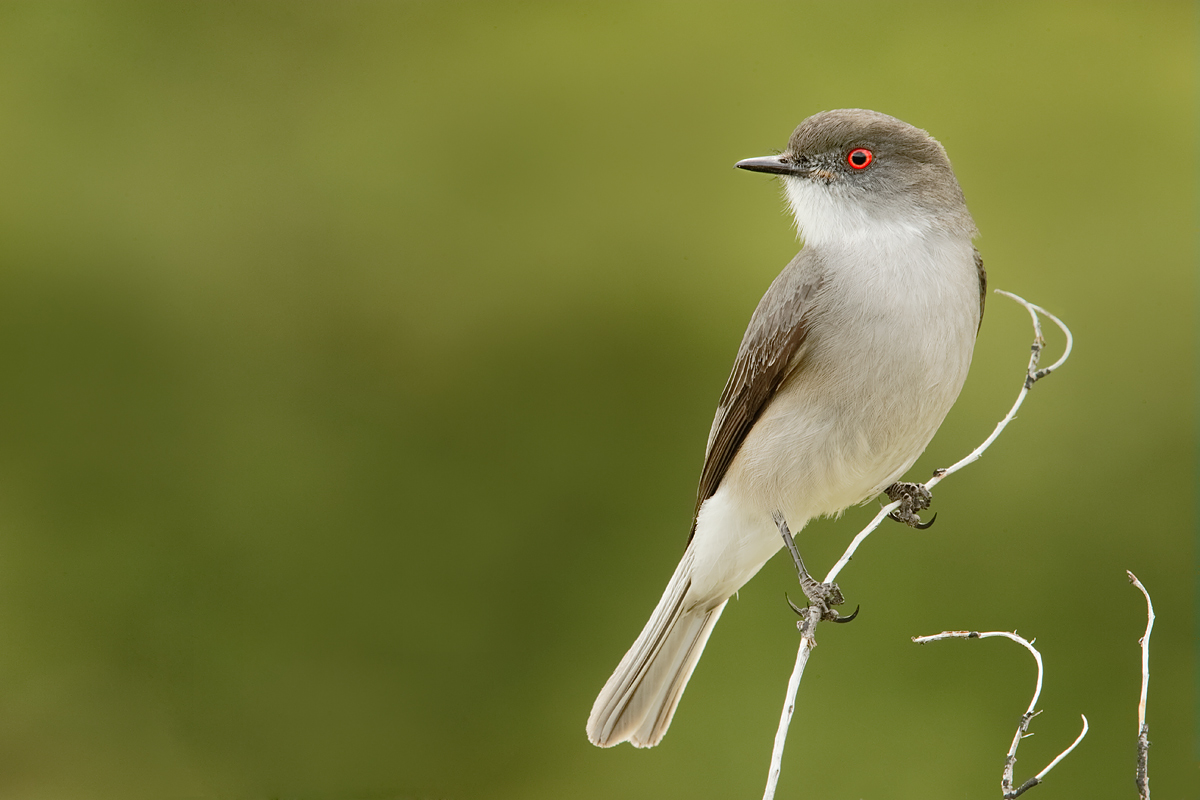
|
|
The image was created in Paine del Torres National Park, Chile with the Gitzo 3532 LS carbon fiber tripod, the Mongoose M3.6 head, the Canon EF 600mm f/4L IS II USM lens, the Canon 2x EF Extender III (Teleconverter), and the Canon EOS-1D X. ISO 800. Evaluative metering a zero (in bright overcast): 1/125 sec. at f/13 in Manual mode. Central sensor (by necessity) Expand/AI Servo Rear Focus AF on the bird’s eye and re-compose. Click here to see the latest version of the Rear Focus Tutorial. Click on the image to see a larger version. Note that if the sun had been out at full strength that I would have needed to go to -1/3 stop to keep from burning the white throat. It takes some guts to re-compose so drastically but this bird usually stayed very still on the perch for more than a few seconds so I decided to go for the best composition with the bird looking towards the empty part of the frame. Note also that for this pose with the bird facing but angled towards us that the head angle, perfectly square to the imaging sensor, is ideal. |
Torres del Paine Tyrant Flycatcherss, Audio Playback in South America, Manual Exposure Tip, and More…
Torres del Paine Tyrants
Both species featured in today’s blog post are tyrant flycatchers, in the same family as our Great-crested Flycatcher, all the peewees and phoebes, all the kingbirds, all of the smaller empidonax flycatchers, and many additional genera. Though they are confined to the Americas, the tyrant flycatchers are the largest bird family in the world.
Audio Playback in South America
The use of audio playback is often a controversial topic in North America and is usually considered taboo in the UK (by conversation with David Tipling) and the rest of Europe (personal knowledge), is standard operating procedure in most of South America with most birders and bird photographers. Even beginning birders are never in the field without their cell phones with all the birds songs on them. Many employed more sophisticated devices. As it states in APB II I am fine with the judicious use of audio recordings to entice birds into viewing and photographic range. Audio playback was used for that purpose with both of the birds featured in this blog post (though not by me; I rarely if ever use playback),
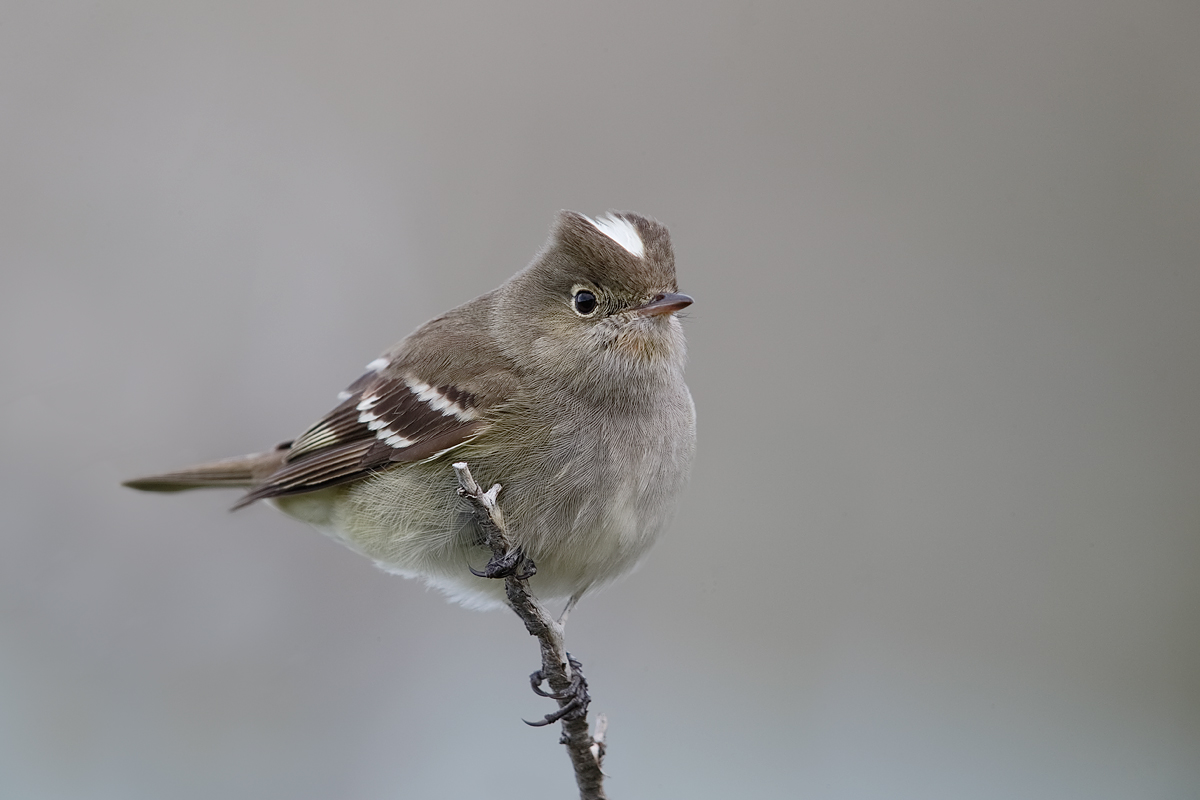
|
|
The White-crested Elaenia image was created at EcoCamp Patagonia in Paine del Torres National Park, Chile with the Gitzo 3532 LS carbon fiber tripod, the Mongoose M3.6 head, the Canon EF 600mm f/4L IS II USM lens, the Canon 2x EF Extender III (Teleconverter), and the Canon EOS-1D X. ISO 800. Evaluative metering +1/3 stop: 1/250 sec. at f/11 in Av mode. Central sensor (by necessity) Expand/AI Servo Rear Focus AF on the right side of the bird’s neck just below the eye active at the moment of exposure. Click here to see the latest version of the Rear Focus Tutorial. Click on the image to see a larger version. This species is notorious for responding eagerly to audio playback. Note that with the soft light and the lighter than middle-toned background that I was working in Av mode; I was sure that +1/3 stop exposure compensation would yield a perfect exposure. I was right. |
Alan Murphy Guides and Audio Playback
Alan’s second e-Guide details the proper use of audio playback. In his first guide, Guide to Songbird Set-Up Photography (106 pages), he taught the world to create killer images at backyard set-ups. In his second e-Guide, “The Photographer’s Guide to Attracting Birds,” Alan expanded upon topics covered in the fist guide and added new methods and techniques as well. As I proofread this new e-Book for readability, I was amazed not only by the images, but by Alan’s innovative and creative techniques. Heck, in many cases, I was stunned by his cleverness. To learn more about the creation of Alan’s 2nd great eBook, click here. This great eGuide is available by download for $50. Click on the link below to get your copy. (PayPal payments are accepted.)

Note: those who would like to purchase both books via download can click on the link immediately above and save $10 on the combo.
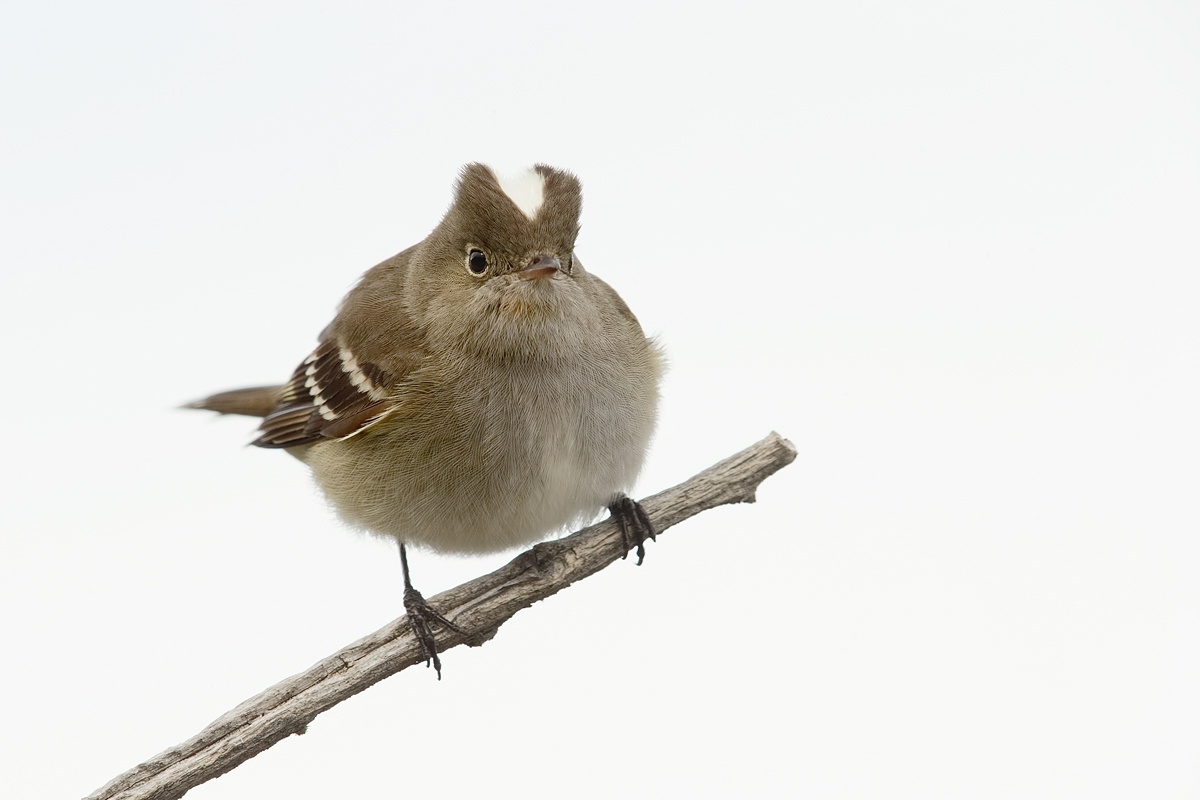
|
|
The White-crested Elaenia image was also created at EcoCamp Patagonia in Paine del Torres National Park, Chile with the Gitzo 3532 LS carbon fiber tripod, the Mongoose M3.6 head, the Canon EF 600mm f/4L IS II USM lens, the Canon 2x EF Extender III (Teleconverter), and the Canon EOS-1D X. ISO 800. Evaluative metering +1/3 stop: 1/320 sec. at f/11 in Av mode. Central sensor (by necessity) Expand/AI Servo Rear Focus AF on the right side of the bird’s lower breast active at the moment of exposure. Click here to see the latest version of the Rear Focus Tutorial. Click on the image to see a larger version. For a better understanding of the exposure settings here see item next. |
Manual Exposure Tip: A Very Fine Point
For the opening image I was working in Av mode. Again, with the soft light and the lighter than middle-toned background that I was working in Av mode, sure that +1/3 stop exposure compensation (EC) would yield a perfect exposure. When the bird perched against the white sky I could have gone to lots of plus EC, probably +3 or more stops off the sky. Instead, I took the exposure values from the blog-opening image with the light grey background and increased the shutter speed by 1 click from 1/250 sec. to 1/320 sec. Why? Because I believe that there is a bit more light falling on a subject set against a bright sky (or a bird in flight) than there is falling on a subject in a bush. Why? My reasoning is that the vegetation absorbs some of the light that would otherwise be falling on the subject. Does this explanation hold water to a physicist? Probably not, but the method works….
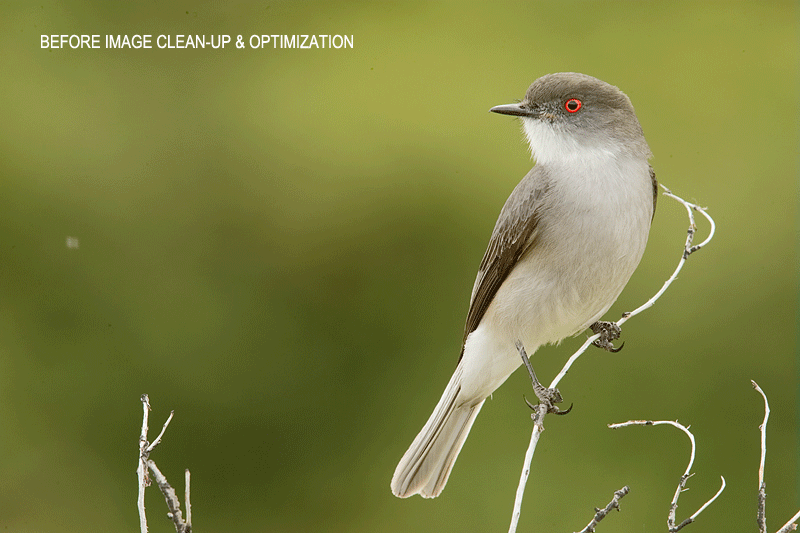
|
Fire-eyed Diucon Image Clean-up & Optimization
Take a moment to let the animated GIF above play. Let us know the major changes that you see. There are at least five major changes. Image clean-up was done with a series of Quick Masks, Protect and defend cloning on a layer, divide and conquer, the Patch Tool, the Clone Stamp, the Spot Healing Brush, and my NIK Color Efex Pro 50-50 custom filter (at 33% opacity).
All of the above is described in detail in our in Digital Basics File, an instructional PDF that is sent via e-mail. It includes my complete digital workflow, dozens of great Photoshop tips, several different ways to expand canvas, all of my time-saving Keyboard Shortcuts, Quick Masking, Layer Masking, and NIK Color Efex Pro basics, image clean-up techniques, Digital Eye Doctor, and tons more.
From Soup to Nuts
From soup to nuts this blog post took more than four hours to prepare. I started at 4:30am and finished at about 9:15am. Breakfast included. The info presented here is posted free for all to enjoy and learn from. We ask that folks make their major and minor purchases using the B&H and Amazon affiliate links below and to the right of all blog posts. Many thanks for considering that request.
Image Questions
Which of the three images is your favorite? Be sure to let us know why. Which of the two White-eyed Elania images is the weaker of the two. Be sure to let us know why. I am interested in hearing what folks think is the single major problem.
Bosque IPTs/Late Registration Discounts Increased!
For information on both the 7-Day and the recently announced short version of the 2013 Bosque IPTs please scroll down here. If you would like to join us for the first 3 or 4 days of this IPT please shoot me an e-mail. Please call Jim at 863-692-0906 or e-mail for late registration discount info.
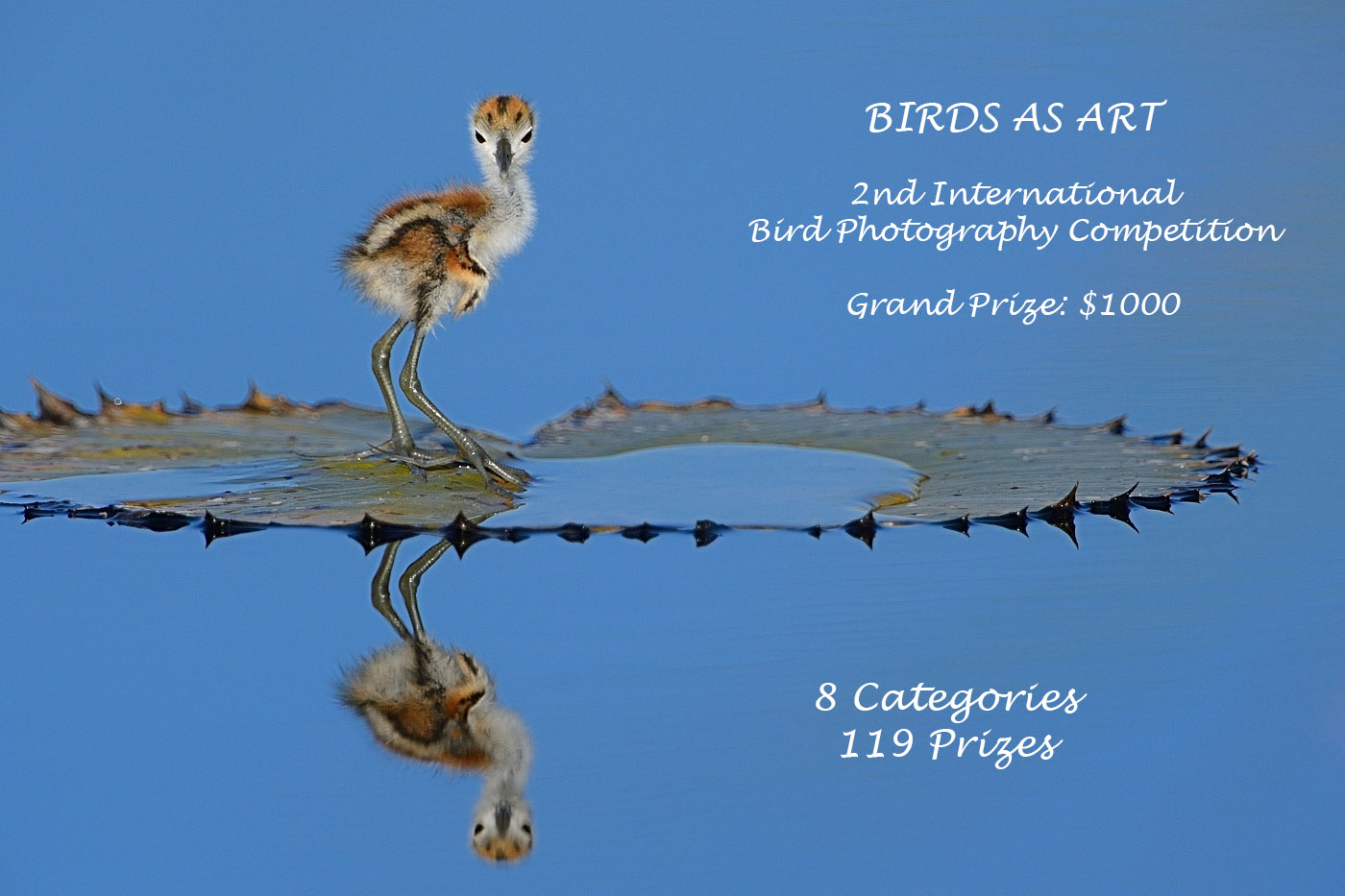
|
BIRDS AS ART 2nd International Bird Photography Competition
Learn more and enter the BIRDS AS ART 2nd International Bird Photography Competition here. Twenty-five great prizes including the $1000 Grand Prize and intense competition. Bring your best.
2014 Tanzania Summer Safari
If you are interested in joining us in Tanzania next summer please shoot me an e-mail and I will be glad to forward you the PDF with dates, itinerary, and price.
Support the BAA Blog. Support the BAA Bulletins: Shop B&H here!
We want and need to keep providing you with the latest free information, photography and Photoshop lessons, and all manner of related information. Show your appreciation by making your purchases immediately after clicking on any of our B&H or Amazon Affiliate links in this blog post. Remember, B&H ain’t just photography!




Amazon
Everyone buys something from Amazon, be it a big lens or deodorant. Support the blog by starting your search by starting your search by clicking on the logo-link below. No purchase is too small to be appreciated; they all add up. Why make it a habit? Because I make it a habit of bringing you new images and information on an almost daily basis.
Typos
In all blog posts and Bulletins feel free to e-mail or leave a comment regarding any typos, wrong words, misspellings, omissions, or grammatical errors. Just be right. 🙂
IPT Info
Many of our great trips are filling up. You will learn more about how to make great images on a BAA IPT than anywhere else on the planet. Click here for the schedule and additional info.














Interesting how etiquette on these issues varies from country to country. I was told by a birding guide in Taiwan that using a flash when photographing birds was very unpopular and would quickly get me into trouble. But playing sounds on a loop at high volume seemed to be OK with photographers from what I could make out, provided you weren’t in one of the specific areas where it had been banned.
Hi Murray,
re:
“Interesting how etiquette on these issues varies from country to country.”
Thanks. That was my point :).
Hi, Artie. I’d be interested to know why you rarely use audio playback to attract birds.
Thanks for all you do for us.
For the most part it is not my style. Too lazy. Too disorganized. That about covers it :).
Thanks, Artie. Well, after having spent two + days with you in the field, I absolutely reject “lazy” as a description of you. 🙂 To say nothing of the 20 hours per week you spend on the blogs and everything else.
I guess that tape jobs are just not my thing 🙂
Artie, new firmware for 5d3 was just posted. I remember you writing that some 5d3 settings are lost on firmware update, but can’t find the reference. Could u help please? Especially concerned about AF microadjusts. Thanks. Steve
If you go here:
http://www.usa.canon.com/cusa/professional/products/professional_cameras/digital_slr_cameras/eos_5d_mark_iii#DriversAndSoftware
enter your operating system, and click on firmware you can download the latest version, 1.2.3 that was released on 10/30/13. So thanks for the heads up. I am downloading it now 🙂
Lovely images Artie, as one would expect! The first is the best.
Hey Ian. Great to hear from you. How is it? I agree on #1 but don’t tell anyone :). I hope to be coming to the UK next summer for some puffins and gannets :). later and love, artie
The first is my favorite, no question. The perch is delicate, the S curve of the perch mirrors the S curve of the bird, the tip of the perch is in the clear. Big plus that the whole bird is close to the plane of focus also.
Hi, Artie. Great images and tips. I was a physics major as an undergraduate and IMHO your explanation of the light of an exposed bird versus one (or even two!) in the bush is exactly right. My favorite image is the non-optimized image of the first bird (the one with the striking orange eye; a tyrant something?), except for the spot on the left. I prefer the background in the non-optimized image; I think the K-shaped twig on the left helps balance the image, although I might also have removed the extra twigs on the right. And the lightish patch of background adds interest for me. As for the Elaenia images, I much prefer the first. The head angle and the bird’s pose are more interesting but the background in the second doesn’t work for me. All that white detracts from the bird and makes the bird’s white head patch seem turn into a little gully in the bird’s head instead of a patch. I find it harsh; the softer grey background is much more pleasing to me.
Hi David, I can buy your desire for the original BKGR in the first image but I feel that the elimination of the extraneous branches dramatically improves the image design and the flow. More on the follow up post at some point.
Thanks, Artie. I agree, I wouldn’t want all of the original, but I really like the K-shaped branch on the left.
Great images. My favourite is the first because of the green background and the striking eye. Of the two Elaenia images, I much prefer the 1st one. The background is much nicer being that slate grey colour and not white. Also the head angle is much better in the first with a perfect engaging turn. The second has a very awkward head angle with the far eye just sort of visible. If the second had turned a little more to the bird’s right for a more head on look then it would have been better.
In my experience it is these type of shots (perched small birds) where the 600II and 2.0TCIII is the perfect combo. Sharpness is amazing when you can fill the frame with that combo.